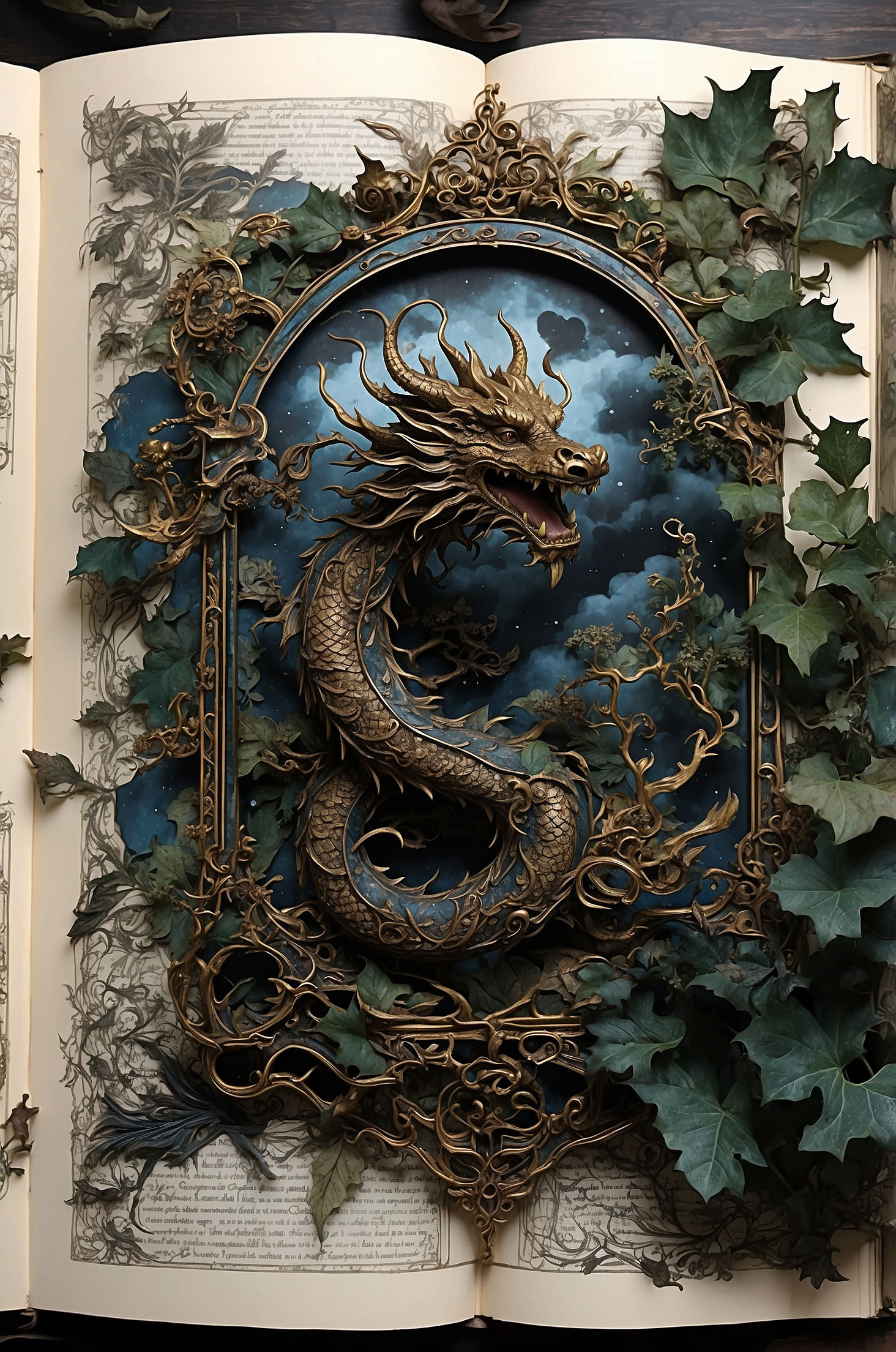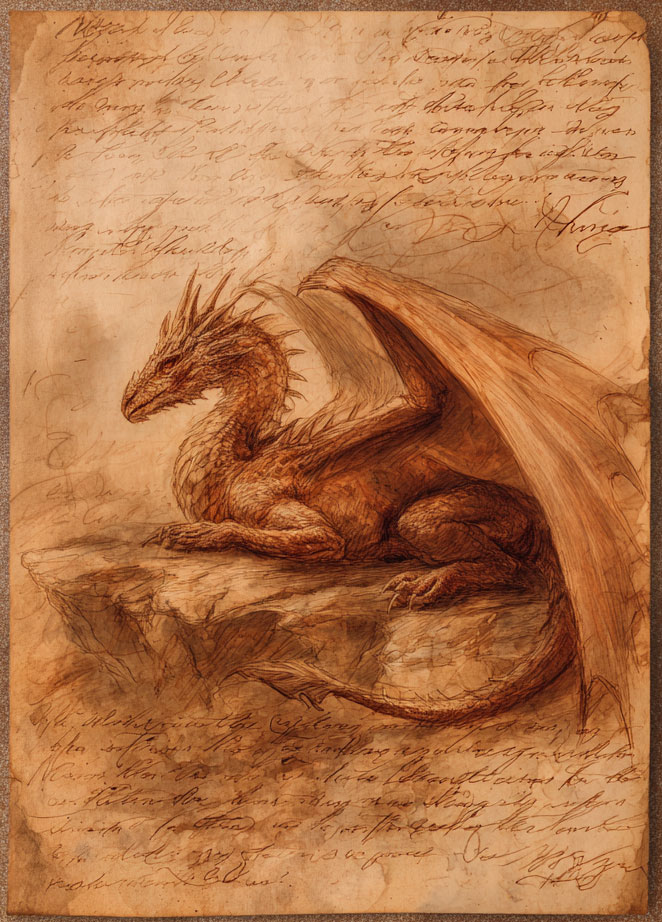The Dragons
Dragons: Guardians of Legends
Throughout the ages, dragons have captured the human imagination, weaving through the tapestry of numerous cultures. These enchanting beasts are often viewed as symbols of power and mystery, embodying the fears and hopes of societies. From the serpentine guardians of Eastern Traditions to the fire-breathing drakes of Western lore, dragons reflect our deepest legends. This narrative explores their historical significance, revealing how they appear in ancient texts, art, and the folklore of various peoples, illuminating our connection to these mythical creatures.

Western Dragons
A majestic force of nature, Western dragons are often depicted as fierce guardians of treasure. With their powerful wings and fiery breath, these creatures embody strength and valor. Explore the tales of their exploits and the legends that surround them.
Eastern Dragons
Graceful and wise, Eastern dragons symbolize wisdom and benevolence. Often depicted in harmony with water and nature, they are revered in many cultures. Delve into the fascinating stories that showcase their serene power and benevolent spirit.
Sea Dragons
Mysterious and elusive, Sea dragons are wrapped in the legends of deep waters. They represent the unknown and are said to control the tides and currents. Journey through the myths that entwine these enigmatic beings and their underwater realms.
Genesis of the Dragon Myths
Mesopotamia: Chaos and Creation
The earliest dragon-like figure is Tiamat, the primordial chaos serpent of Babylonian myth. She rose from the sea, symbolizing the untamed forces of nature. When the storm god Marduk slayed her, he used her body to form the heavens and earth — establishing the dragon as a primal force of creation and destruction.
Egypt, Greece, and Beyond
In Egypt, serpent-dragons like Apep represented darkness and disorder, locked in eternal struggle with the sun god Ra.
In Greek mythology, dragons and serpents guard sacred sites: the Python at Delphi slain by Apollo, or Ladon, guardian of the golden apples. They serve as obstacles between mortals and divine treasures, reinforcing the dragon’s role as tester and gatekeeper.

Dragons in modern culture
Literature and Fantasy
– J.R.R. Tolkien’s Smaug (The Hobbit) revived the Western dragon as a symbol of greed and menace, yet gave him wit and personality.
– Anne McCaffrey’s Pern series reimagined dragons as telepathic companions, allies to humanity.
– Game of Thrones presented dragons as instruments of power — Daenerys’ brood shifting the balance of kingdoms.
Games and Role-Play
– Dungeons & Dragons codified dragon archetypes: chromatic (evil, destructive) vs. metallic (benevolent, wise). This duality reflects both Eastern and Western traditions.
– Video games like Skyrim, Monster Hunter, and World of Warcraft continue the tradition, with dragons as bosses, allies, or gods.
Cinema and Animation
– From Disney’s Mulan (Mushu the guardian dragon) to DreamWorks’ How to Train Your Dragon, portrayals range from comic sidekicks to noble companions, showing the creature’s adaptability to modern audiences.
Questions
Journey into the world of dragons and their mysteries.
Legends whisper of dragons emerging from ancient realms, steeped in the myths of cultures worldwide. From the high peaks of the Himalayas to the deep caverns beneath the earth, their stories weave through time, bringing forth awe and wonder.
Dragons are often depicted as magnificent beings, adorned with scales and wings, wielding ancient powers. Their wisdom runs deep, and their fire breath is both a gift and a reminder of their majesty—each dragon a unique embodiment of nature’s raw energy.
Indeed, many tales reveal dragons as wielders of magic, possessing powers that transcend the ordinary. From elemental control to transformative spells, their abilities are rooted in the ancient secrets of the earth and sky.
Dragons are woven into the fabric of folklore across continents; they serve as guardians, harbingers, or even tricksters. These roles evolve, reflecting the shifting values and fears of societies that revere or revile them.
Dragons symbolize strength and resilience, often depicted as guardians of treasure or sacred knowledge. They represent the duality of power—the protective force against chaos and the destructive potential of rage.
Legends often depict dragons feasting on livestock, but they also hunger for gold, believing it to enhance their power. Each dragon’s diet varies, steeped in the mystical beliefs of their respective cultures.
To meet a dragon, step into realms of imagination. Read stories and immerse yourself in myth. The more you understand their essence, the closer you come to their mythical presence.
The nature of dragons transcends simple labels. They can embody both wisdom and wrath, reflecting more profound truths about human nature and our perceptions of good and evil.
Dragons are often believed to command elemental forces, from fire to storms, channeling energy in ways that inspire awe. Their breath of fire, a symbol of their strength, is as legendary as the creatures themselves.
While owning a dragon is confined to the boundaries of imagination, embracing their spirit through stories and art brings you closer to the enchantment they inspire. Let them reside in your heart rather than your home.